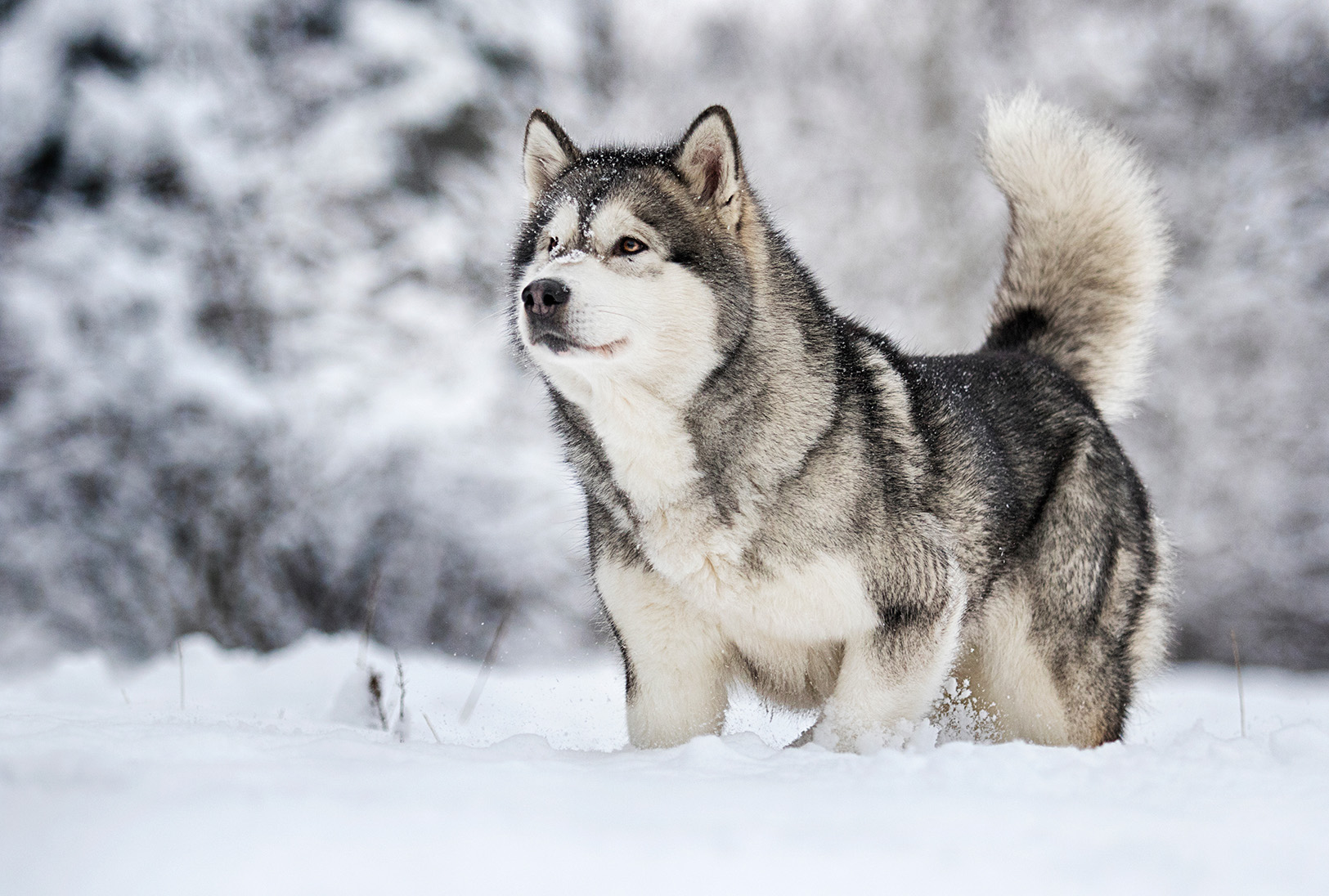Alaskan Malamute

Description
The Alaskan Malamute is a large, powerful dog breed originally bred for strength and endurance, developed by the native Inupiat people of Alaska to haul heavy loads over long distances in harsh, cold conditions. Known for its wolf-like appearance, the Malamute has a thick, double coat that comes in various colors, and a bushy tail carried over its back. Typically standing 23–25 inches tall and weighing between 75–100 pounds, they are large, sturdy, and striking dogs.
Malamutes are friendly, loyal, and affectionate with their families, making them excellent companions. They are also independent and can be stubborn, which can make training a challenge, so they are best suited for experienced dog owners. Highly energetic, they require plenty of exercise and mental stimulation to stay happy and healthy, excelling in activities like hiking, running, or pulling sleds.
While generally healthy, Alaskan Malamutes are prone to conditions like hip dysplasia and hypothyroidism, and their thick coat requires regular grooming, especially during shedding seasons. Malamutes are not ideal for hot climates, as they can be sensitive to heat.
With their strong work ethic and endurance, the Alaskan Malamute is an excellent choice for active families or individuals who can meet their physical and mental needs, but they may not be the best fit for first-time dog owners or those in smaller living spaces.
History
The Alaskan Malamute is one of the oldest and most powerful Arctic sled dogs, with a history that dates back thousands of years. The breed originated with the Mahlemut people, an Inuit tribe who settled in the rugged, icy regions of Alaska. These indigenous people relied on the Malamute for survival, using the dogs to pull heavy sleds over long distances, hunt large game such as seals and bears, and assist in hauling supplies. The breed's strength, endurance, and ability to thrive in harsh, subzero conditions made it an invaluable companion in the unforgiving Arctic environment.
The Alaskan Malamute's lineage remained relatively pure for centuries due to the isolation of the Mahlemut people and their deep reliance on the dogs. Unlike other sled dogs that were bred for speed, the Malamute was specifically bred for power and stamina, capable of carrying heavy loads over long stretches of frozen terrain. Their loyalty and strong bond with humans further solidified their role as working partners and members of the family.
During the late 19th and early 20th centuries, the Alaskan Malamute became more widely known beyond its native region. The Klondike Gold Rush of the 1890s brought an influx of prospectors to Alaska, many of whom relied on sled dogs like the Malamute to navigate the treacherous terrain. However, the breed faced challenges during this period as crossbreeding with faster dogs became common, threatening the purity of the Malamute lineage. Fortunately, dedicated breeders began working to preserve the original traits of the breed, ensuring its survival.
The Alaskan Malamute's importance was further cemented during World War II, when the breed was used for military purposes, including search-and-rescue missions and hauling heavy supplies in snowy, remote environments. Their rugged reliability and adaptability made them a crucial asset to the U.S. military in Arctic operations. In 1935, the American Kennel Club (AKC) officially recognized the breed, marking a significant step in its formal preservation and promotion.
Today, the Alaskan Malamute remains a symbol of strength, loyalty, and endurance. While they are no longer primarily used for heavy sled work, they continue to excel in activities such as sledding, weight-pulling, and other canine sports. Known for their affectionate nature and imposing presence, Alaskan Malamutes are cherished as family companions and as living reminders of their storied past in one of the harshest environments on Earth.
Colors
• Black & White
• Grey & White
• Red & White
• Sable & White
• Seal & White
• White & Chocolate


